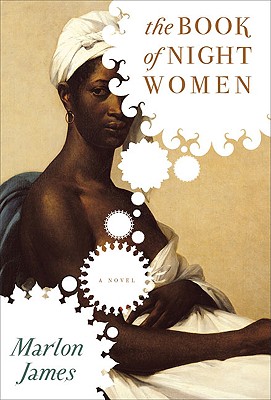



She is taken into the plantation-owner’s house, hidden by Homer, an older woman slave, through whom she meets a number of her half-sisters, who share her green eyes.

Fourteen years later, Lilith’s life changes when she is, in turn, threatened with rape by a johnny-jumper ( a black overseer) and she kills him. She was conceived as the result of a rape on her very young mother by her white overseer father Jack Wilkins, from whom she inherits her green eyes. It is also, surprisingly, a heartbreaking love story, of a man and woman haltingly trying, and mostly failing, to overcome their status of slave and master.Phew! What a way to finish my reading year! Originally published in 2009, this is the story of young, enslaved Jamaican woman Lilith, living on Montpelier sugar plantation in the late 18th century. These women have been maimed, inside and out, and so this is also a book about how the indomitable human impulses toward kindness, love, friendship, family, and loyalty are warped so absolutely in a slave’s life as to make a mockery of them. These women hide their scars beneath scarves and bonnets and clothes. Their leader has a “quilt” of scar tissue on her back from whippings and breasts branded to mangled nubs. Of the six women who plan the uprising, one has been shot blind in one eye, one had her throat slit as a child and has lived as a mute, one is scarred top to toe from the deliberate sprinkling of hot coals by an overseer. As the title suggests, this is a book about women, each with her own path through enslavement and her own injuries. James inspires courage of imagination, he has traversed light and darkness, he has traversed centuries, and he has traversed gender. It’s horrible to ask this question because the odds overwhelmingly suggest that if any of us, regardless of race, had been raised by slaveholders, we would probably be able sit on our porches watching whippings and hangings while drinking lemonade. This epic, beautiful, complicated, enthralling book, filled with damaged people living in the misery of a plantation, where “white man sleep with one eye open, but black man can never sleep,” raises an obvious question: Who the hell were these white people? They weren’t aberrant sadists-they constituted basically the entire white population of their communities. I once argued with my husband that we should name our son Toussaint, for example, but James’ unflinching engagement with history made me realize that I have read books on how Nazis, fascists, and communists found willing executioners, but never one on the psychology of the overseers of 400 years of slavery. Reading this book, I was ashamed at the relative paucity of my historical curiosity and imagination. A big, masterful novel like this raises questions without answering them-it raises questions that stay raised.


 0 kommentar(er)
0 kommentar(er)
